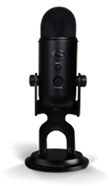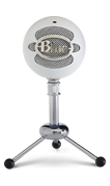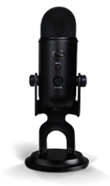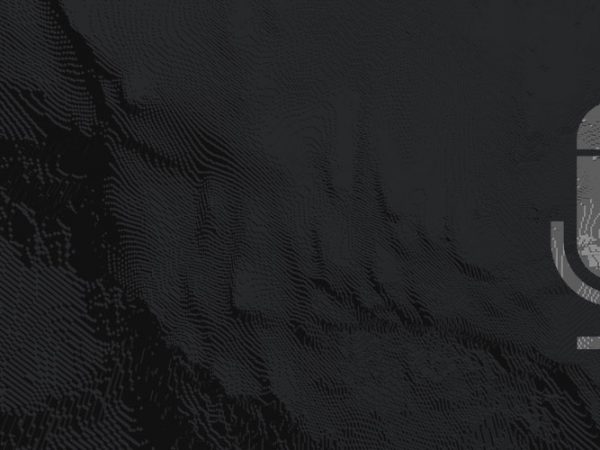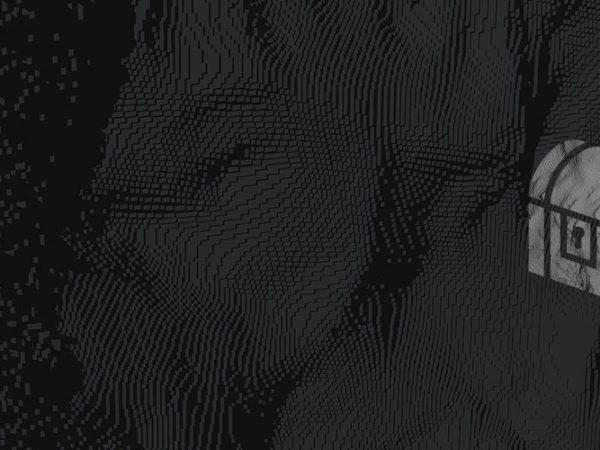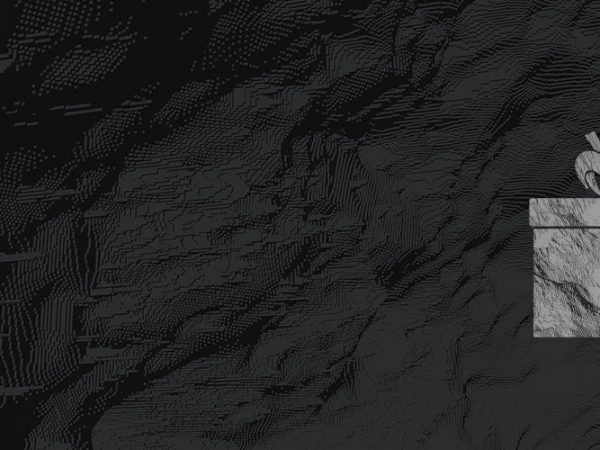The Snowball and Yeti mics are both popular choices, but which one is best suited for your needs? Let’s find out which is better, Blue Yeti Vs Blue Snowball! But wait, there is more! Read our review about Blue Yeti vs AT2020!
Higher Quality Sound
Blue Yeti
The Blue Yeti is a versatile and top-quality recording mic with fine audio adjustments and a highly capable stand for professional recording.
Budget Option
Blue Snowball
The Blue Snowball is an effective and lightweight recording mic that’s affordable with a cool retro look. Perfect if you’re on a budget.
Contents
Choosing the Best Mic
Whether you’re recording video, making your own music, or searching for the best mic for streaming, audio quality is more important than you realize.
If you have poor audio listeners will shut you off and walk away. If your music has poor quality nobody is going to want to pick up your new album even if it is good.
That’s why it’s so important to invest in a quality mic. Blue is well-known for producing top-quality products, but it offers two competing mics that are both worth consideration.
There’s the Blue Yeti and the Blue Snowball. They’re both solid, but very different.
We’ll break down those differences below and help you decide which mic you need for your projects.
In this guide of Blue Yeti vs Snowball we’ll show you:
- Why the Yeti isn’t the best starter product
- How the Snowball is the more portable tool
- Which mic has the best feature-set
- Is Yeti really worth the extra cost?
The Specs
First lets breakdown the technical info for both mics.
| Blue Yeti | Blue Snowball | |
|---|---|---|
| Microphone Type | Condenser | Condenser |
| Compatibility | Win 7, 8.1, 10 – Mac 10.10+ | Win 7, 8.1, 10 – Mac 10.10+ |
| Frequency Response | 20hz to 20kHz | 40hz to 18kHz |
| Polar Patterns | Cardioid, Bidirectional, Omnidirectional, Stereo | Cardioid or Omnidirectional |
| Condenser Capsules | 3 | 2 |
| Weight | 1.2 lbs (.55 kg) | 460g |
| More Specs & Reviews | Read more | Read more |

Versatility
Here we’ll look at how versatile the mics are because a good mic has to capture many different types of audio, such as music, speech and instruments.
Blue Yeti – A Highly Adjustable Device
The Blue Yeti USB microphone is designed to be used for streaming, music recording, vocals, for conducting interviews and also for podcasts.
It’s a versatile recording device that can be used for most projects without an issue.
This is in large part because of its condenser capsule technology that captures clear audio in most instances.
Snowball – Designed for Most Situations
The Blue Snowball is less versatile but still designed to work for a wide range of tasks. This device can be used for interviews and podcasting as well as vocals and music.
It handles all these different tasks with two transducers instead of three and it offers clear audio recording capabilities as well, though within a smaller range of frequencies.
Plug and Play
These microphones feature a simple plug and play design making it quick and easy to set them up.
Blue Yeti – Set up Simply
This microphone can be plugged directly into most computers and used within moments without adding special software to make it work so you can get recording immediately.
This includes Windows 7, Windows 8.1 and Windows 10 systems and any Mac 10.10 or higher product. This mic can be used on USB 1.1, 2.0 and 3.0 ports as well.
Blue Snowball – Use in Minutes
The Blue Snowball is even easier to use because it has fewer controls and functions to learn. This makes it perfect if you want to start recording within minutes after opening it up.
It can be plugged in and used almost immediately without special software and drivers. The microphone works on Windows 7, Windows 8.1, Windows 10 and Mac 10.10 and higher laptops and desktop computers.
It works on USB 1.1, 2.0 and 3.0 ports as well, making it highly compatible with most devices.
Aesthetics
Mics are displayed out in the opening most times, so it’s important for them to look good out on your desk or work station.
Blue Yeti – Has a Sleek and Modern Look
The Blue Yeti has a sleek and streamlined look and is available in four different colors to really enhance its look and help it to stand out.
When sitting on your desk it’s going to make it look professional and help enhance your credibility with listeners if you make videos.
The mic is an attractive tool for most recording tasks and it is available with a range of different accessories that can be added on for performance enhancements, but also to change the way that it looks.
Blue Snowball – Has a Retro Look
The Snowball is designed with an old-school look that will take you back in time to much older microphones. If you’re looking for that classic style while capturing high-quality vocals this microphone is a solid tool.
It’s offered in three different color finishes and it can also accept a mix of different accessories to change up its look and function even more.
Frequency Responses
Sound is put out in high and low frequencies and some microphones are better at capturing those different frequencies.
We look at the range of frequencies captured below, because a wider range offers better sound quality.
Blue Yeti – Records a Larger Frequency
The Yeti is equipped with more condenser capsules which allows it to pick up a wider range of frequencies effectively while recording.
That means you can produce the highest quality audio that gives listeners even more to enjoy.
Because of this the mic can be used with frequencies between 20Hz and 20 kHz. This helps give the Yeti recordings a richer sound overall than what the Snowball mic can capture.
Blue Snowball – Captures a Smaller Frequency
With one fewer condensers the Snowball captures between 40Hz and 18 kHz which is quite a bit more limited than the Yeti.
Either way, both mics should capture instruments and vocals effectively and leave you with good recording quality for most situations.
Condenser Capsule Technology
Condenser mics are known for their ability to capture audio notes highly accurately. Both of the Blue microphones come fitted with more than one of these condensers.
Blue Yeti – Equipped with 3 Condensers
With more condensers the Blue Yeti captures a wider frequency range of audio when recording. That means you can capture more of the sounds as you record and grab audio that’s a bit more detailed.
The added condenser also gives access to more polar patterns when recording for greater recording options to choose from so you can pick the option that sounds best for your session.
Blue Snowball – Has Just 2 Condensers
With just two condensers built in, the Blue Snowball captures less detail and also has fewer recording options to choose. It’s simpler to use for this reason, but offers slightly lower-quality audio quality in the end.

Blue Yeti: Differentiating Features
The features below help set apart the Blue Yeti from the Blue Snowball mic.
Equipped with a Headphone Amplifier
Easily adjust your headphone volume directly from the Yeti mic while recording using the in-line headphone amplifier.
You’ll enjoy better listening quality and more precision when recording thanks to this simple feature.
Bidirectional and Stereo Polar Patterns
The Blue Yeti can capture audio from side to side or in an up-down formation depending on the capture situation and your use-case.
That means you can swap through more capture settings when trying to get the best possible audio quality.
With more options the Yeti is more complicated, but more powerful and effective.
Blue Snowball: Differentiating Features
The features listed below are what make the Snowball different from the Yeti.
Compact and Lightweight Mic Stand
The stand included with the Snowball is compact and lightweight, making it easy to move around.
If you need a portable recording tool, the Snowball is the superior option overall. It takes up less space in a bag and is more comfortable to carry around.
Simple Button Controls
With very few adjustments and buttons to worry about it takes only a few minutes to learn how to operate the Blue Snowball. This makes it superior for those new to recording that just want to get going.
When you get the Snowball you’ll be recording in moments and the results will be pretty good as well.
Built in Pop Filter
With the Snowball you get a pop filter that’s built into the mic itself. This helps with popping noises and leaves you with clearer audio than what you might get from the stock Yeti.
Both mics should be equipped with an aftermarket pop filter for best results though.
Still, it’s nice having the pop filter as soon as the Snowball arrives, and it will work fine for users for a short time until they get something better.
Yeti vs Snowball: Pros and Cons
Below is a breakdown of the good and the bad of each of these recording devices.
For a quick overview of the perks and downfalls read on and you’ll soon have an idea of which mic will work best for you.
Advantages of the Yeti
- The Yeti offers far more adjustments and features. The Blue Yeti is a much more complex device complete with many more audio adjustments on the mic itself and more features. This makes it easy to take higher-quality recordings using the Yeti and also to set it up for a wider range of recording situations. The device is just more versatile for this reason.
- The Yeti offers more polar pattern options when listening. When using the Yeti you have more polar patterns to work with when setting it up at the beginning of a recording session. With Cardioid, omnidirectional and bidirectional and stereo options to select from you can find the one that sounds best and go with it.
- The Yeti is sold in more color options as well. That means when you buy the Yeti you can pick from more colors and get the exact look that you want without having to rely on covers and accessories to give you a specific style.
- This mic has a three-condenser design for higher audio quality. With three audio condensers the Yeti records a wider range of frequencies and offers superior audio quality and recording options than the Blue Snowball can.
Disadvantages of the Yeti
- It’s a more costly device. The Yeti is often close to double the price of the Snowball. That’s a very real concern for most users and it’s something to think about before buying one. More features are added for the cost, but some users don’t need the features.
- The Yeti is significantly larger in size. The mic itself is similar in size to the Snowball, but the stand and everything else attached makes the Yeti larger and heavier to work with. This is a downside if you have to move it around much.
- It’s more difficult to use. The Yeti will take longer to learn because of more options and features to figure out. It’s a more difficult option for novices and will take time and learning in order to really get the best results with it.
Advantages of the Snowball
- It comes equipped with a lightweight design. The Snowball weighs about one third of what the Blue Yeti weighs when using the stock mounts. It’s also more compact in size. This makes it more portable and easier to take with you on the go.
- It has a lower price tag. The Blue Snowball is far more affordable than the Yeti is. This makes it an ideal option for users that aren’t sure they will want to keep recording over time. Even when sold with additional accessories it’s often more affordable than the stock Yeti is.
- The Blue Snowball is simple and easy to learn. With just a few controls and adjustments it takes only minutes to learn how to use this microphone. The Yeti takes much longer to learn to use effectively.
- The Snowball has an attractive retro look that makes it stand out. The Snowball looks similar to mics from 30 years ago and it’s easy to love for that reason. If you like the look of older mics and you want to bring that to your recording studio you can do that just fine using the Snowball.
Disadvantages of the Snowball
- There aren’t as many color options. The Snowball is attractive to look at, but only has three color adjustment options compared to the Yeti’s four. This is a slight downside to users that like lots of color options.
- There are only two condensers. The Blue Snowball uses two condensers instead of the three used on the Yeti. This results in a smaller recording range and slightly lower quality recordings. It’s also the reason there are fewer polar pattern options to work with when recording.
Final Verdict
Both the Blue Yeti and Blue Snowball mics are rock-solid recording tools that will work in most situations. If we had to pick one device for all-around performance and quality it would have to be the Blue Yeti, it’s just more capable.
However, the Blue Snowball isn’t much lower in quality, it’s much more affordable and also more lightweight and portable. If you want the most options and the best quality the Yeti is the obvious choice.
If you don’t mind fewer options and like portability, or you’re looking for a more affordable setup the Snowball is a solid option as well.

